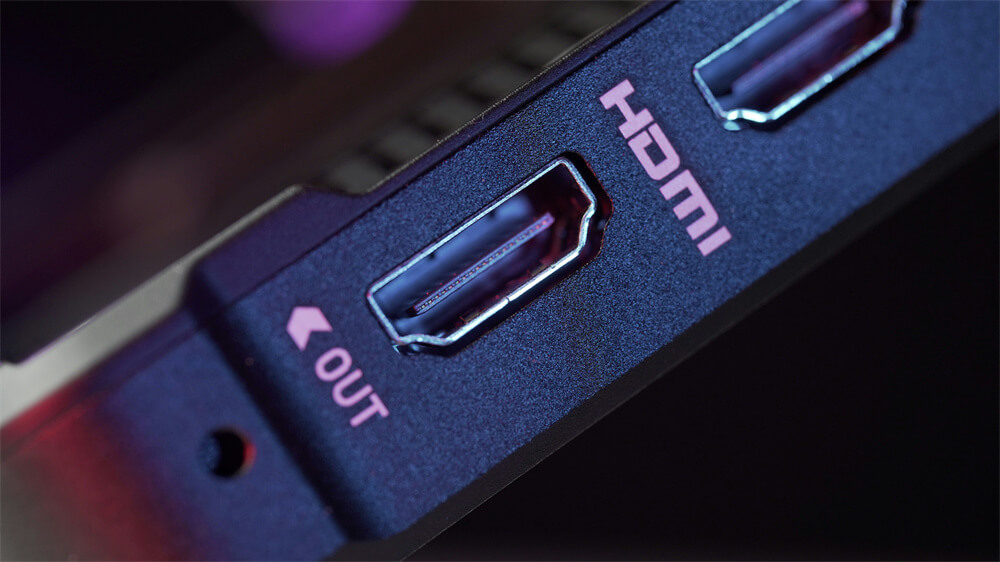HDMI technology has evolved dramatically to meet the demands of modern high-resolution displays and immersive audio systems. As consumers and professionals push for higher-quality home theaters, gaming setups, and commercial AV installations, the choice of HDMI cable becomes critical. Two advanced options dominate the market: fiber optic HDMI cables and active optical HDMI cables (AOCs). While both leverage optical technology, they serve distinct purposes. This guide explores their differences, use cases, and how to choose the right solution for your needs.

1. Introduction to Optical HDMI Cables
Traditional copper HDMI cables face limitations in bandwidth, distance, and susceptibility to electromagnetic interference (EMI). These challenges become pronounced with 8K video, 120Hz refresh rates, and long-distance installations. Optical HDMI cables address these issues using light-based signal transmission, offering superior speed, clarity, and reliability.
This article compares two optical solutions:
Fiber Optic HDMI Cables: Pure optical transmission with no copper components.
Active Optical HDMI Cables (AOCs): Hybrid designs combining optical fibers and copper wires.
2. Definitions and Core Technologies
Fiber Optic HDMI Cable
A fiber optic HDMI cable converts electrical signals into light at the source device (e.g., a Blu-ray player) and back into electrical signals at the display. It relies entirely on optical fibers, eliminating copper conductors. This design ensures immunity to EMI and enables ultra-long-distance transmission (up to 500 meters).
Active Optical HDMI Cable (AOC)
AOCs blend optical fibers and copper wires. The optical fibers handle high-speed data (e.g., video and audio), while the copper wires manage low-speed signals like Consumer Electronics Control (CEC) and power delivery. This hybrid approach balances performance and cost but limits maximum bandwidth and distance compared to pure fiber solutions.
3. Technical Differences
Construction
Aspect | Fiber Optic HDMI | Active Optical HDMI (AOC) |
Core Material | 100% optical fibers | Optical fibers + copper wires |
Thickness | Slimmer and flexible | Slightly thicker due to copper |
Durability | Resistant to corrosion and EMI | Copper components prone to wear |
Signal Transmission
Fiber Optic: Full digital-to-optical conversion ensures zero signal degradation, even at 500 meters. Ideal for 8K@60Hz, 4K@120Hz, and lossless audio formats like Dolby Atmos.
AOC: Partial optical conversion. Copper components limit maximum distance to ~100 meters and may introduce minor signal loss at 4K@60Hz.
Bandwidth and Compatibility
Fiber Optic: Supports HDMI 2.1 specifications (48 Gbps), enabling advanced features like Variable Refresh Rate (VRR), Auto Low Latency Mode (ALLM), and Enhanced Audio Return Channel (eARC).
AOC: Typically compliant with HDMI 2.0 (18 Gbps), suitable for 4K@60Hz but incompatible with 8K or HDMI 2.1 enhancements.
4. Pros and Cons
Fiber Optic HDMI Cables
Advantages:
EMI Immunity: No interference from Wi-Fi routers, power cables, or fluorescent lights.
Long-Distance Performance: Reliable signal transmission up to 500 meters.
Future-Proof: Ready for 8K, 10K, and HDMI 2.1 features.
Disadvantages:
Higher Cost: Premium pricing (e.g., $150+ for a 30-meter cable).
Directional Installation: Some models require a specific source-to-display orientation.
Active Optical HDMI Cables (AOCs)
Advantages:
Cost-Effective: Affordable for 4K setups (e.g., $60 for a 15-meter cable).
Simplified Power Delivery: Draws power from connected devices, avoiding external adapters.
Backward Compatibility: Works with older HDMI 1.4/2.0 devices.
Disadvantages:
EMI Sensitivity: Copper wires can pick up interference in crowded environments.
Limited Bandwidth: Not suitable for 8K or high-refresh-rate gaming.
5. Ideal Use Cases
Fiber Optic HDMI Cables
Home Theaters: Large rooms with projectors or TVs positioned far from media sources.
Commercial AV Systems: Auditoriums, conference halls, and digital signage requiring long cable runs.
EMI-Prone Environments: Industrial settings or spaces with dense electronic equipment.
Active Optical HDMI Cables (AOCs)
Gaming Consoles: Short to medium distances (e.g., PS5/Xbox to a 4K TV).
Office Setups: Connecting laptops to conference room displays.
Budget-Conscious Installations: Where 8K readiness is not a priority.
6. Key Considerations Before Purchasing
Distance Requirements
For runs exceeding 15 meters (50 feet), fiber optic HDMI is the only reliable choice.
AOCs suffice for distances under 30 meters (100 feet).
Resolution and Refresh Rate
8K@60Hz or 4K@120Hz: Requires fiber optic HDMI with HDMI 2.1 support.
4K@60Hz: AOCs provide adequate performance.
Environmental Factors
Avoid AOCs in areas with heavy EMI (e.g., near motors or unshielded power cables).
Fiber optic cables are ideal for in-wall installations due to their slim, flexible design.
7. Future Trends in HDMI Technology
As the adoption of HDMI 2.1 grows, fiber optic cables will dominate high-end applications. Innovations like modular connectors and improved manufacturing processes are expected to reduce costs. Meanwhile, AOCs will remain relevant for mid-tier setups, though their reliance on copper may limit compatibility with future standards.
8. Conclusion
Choosing between fiber optic HDMI and active optical HDMI depends on your specific needs:
Choose Fiber Optic HDMI If:
You require 8K resolution, long-distance transmission, or EMI-free performance.
Future-proofing is a priority.
Choose Active Optical HDMI (AOC) If:
You need a cost-effective solution for 4K@60Hz setups.
Cable runs are under 30 meters.
Both technologies represent significant advancements over traditional copper HDMI cables. By aligning your choice with your budget, distance requirements, and performance goals, you can optimize your AV setup for years.
Final Recommendations
For 8K home theaters: [Ruipro 8K Fiber Optic HDMI].
For budget-friendly 4K gaming: [Cable Matters Active Optical HDMI].
By understanding these distinctions, you can make an informed decision that enhances your viewing, gaming, or professional AV experience.
Tag:HDMI Cable,AOC




